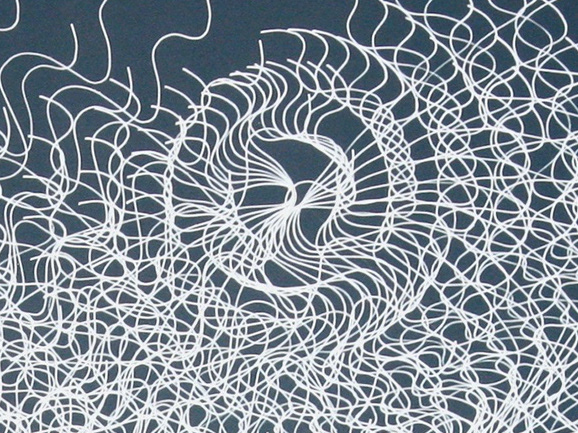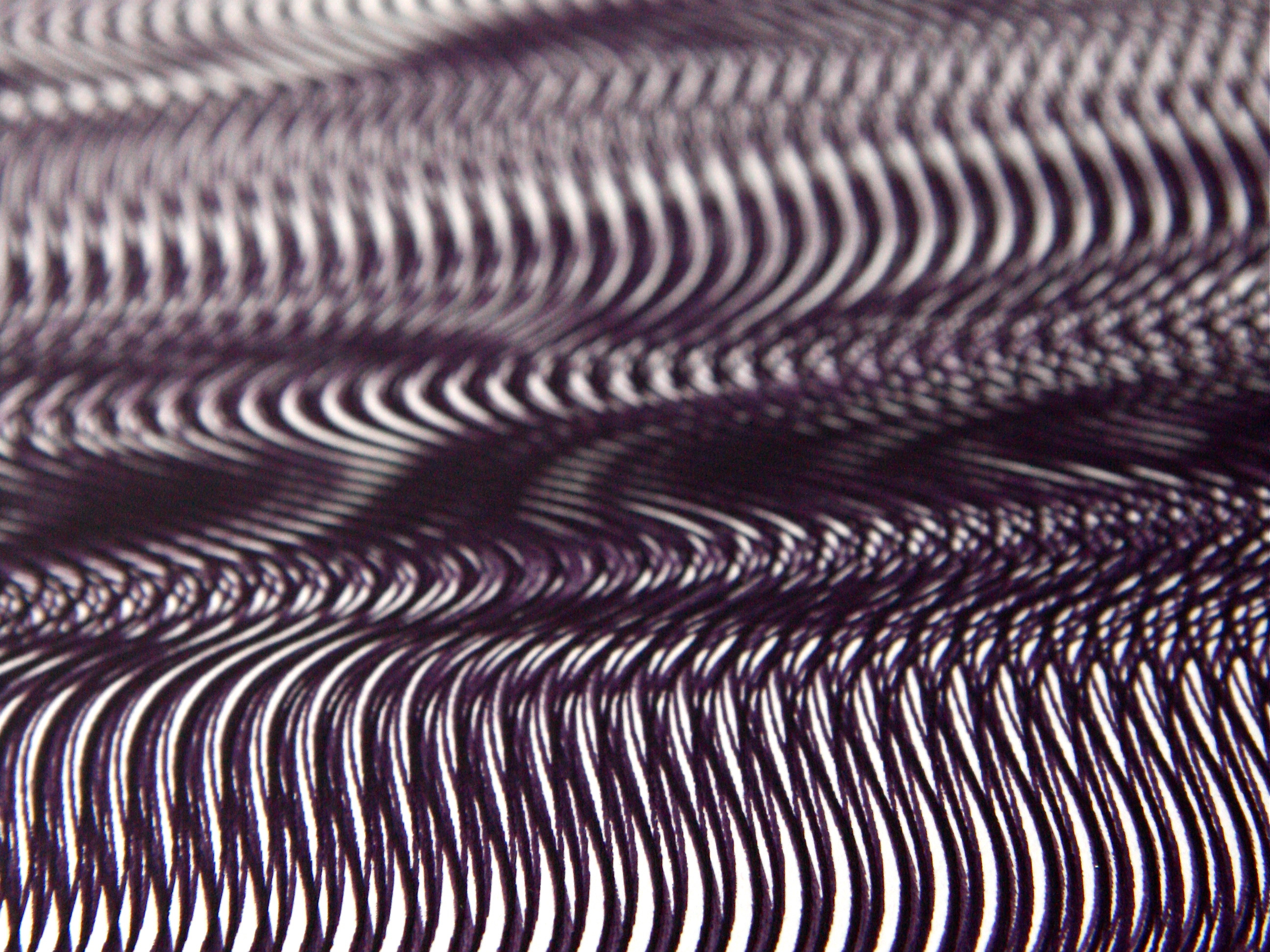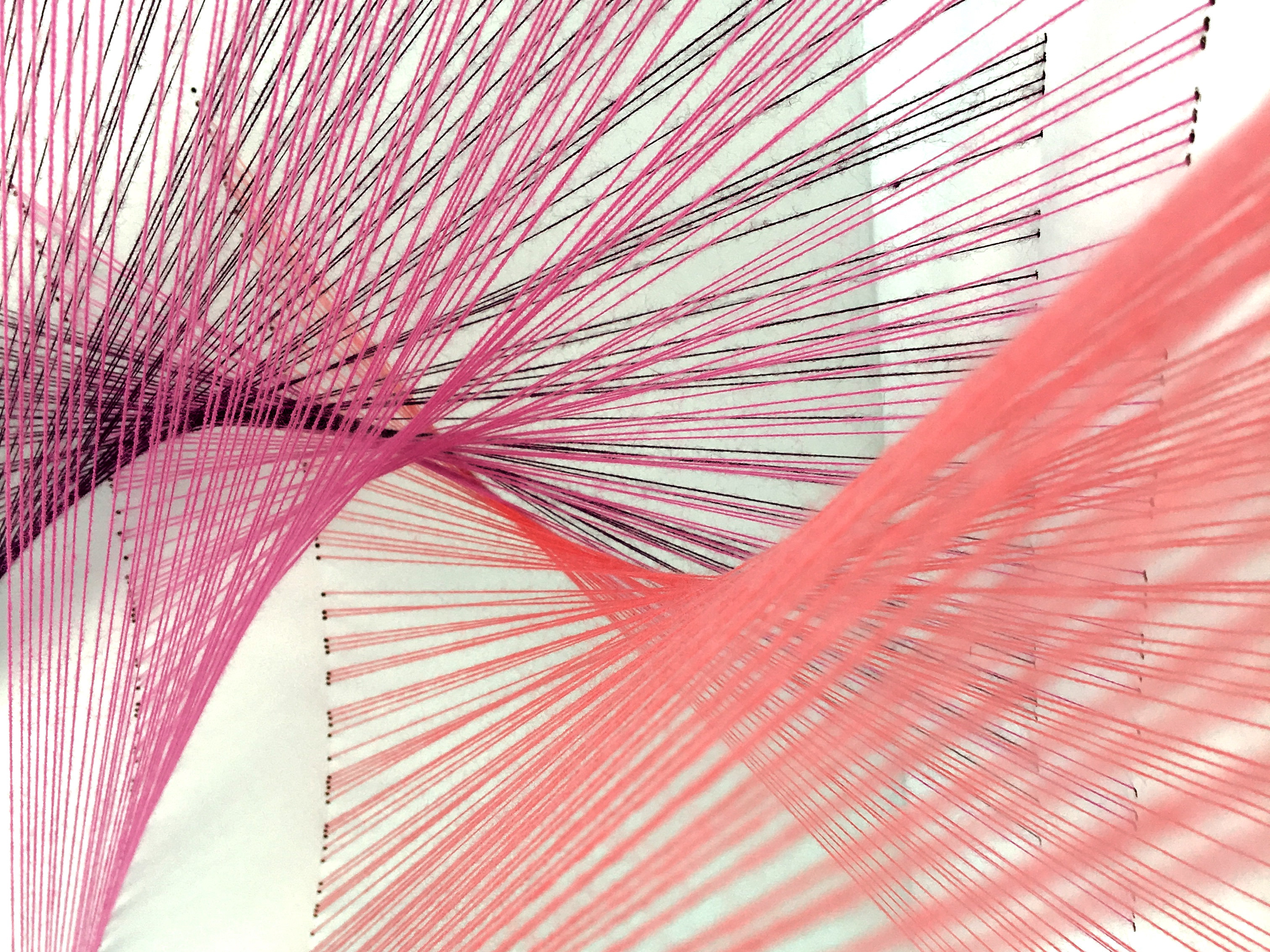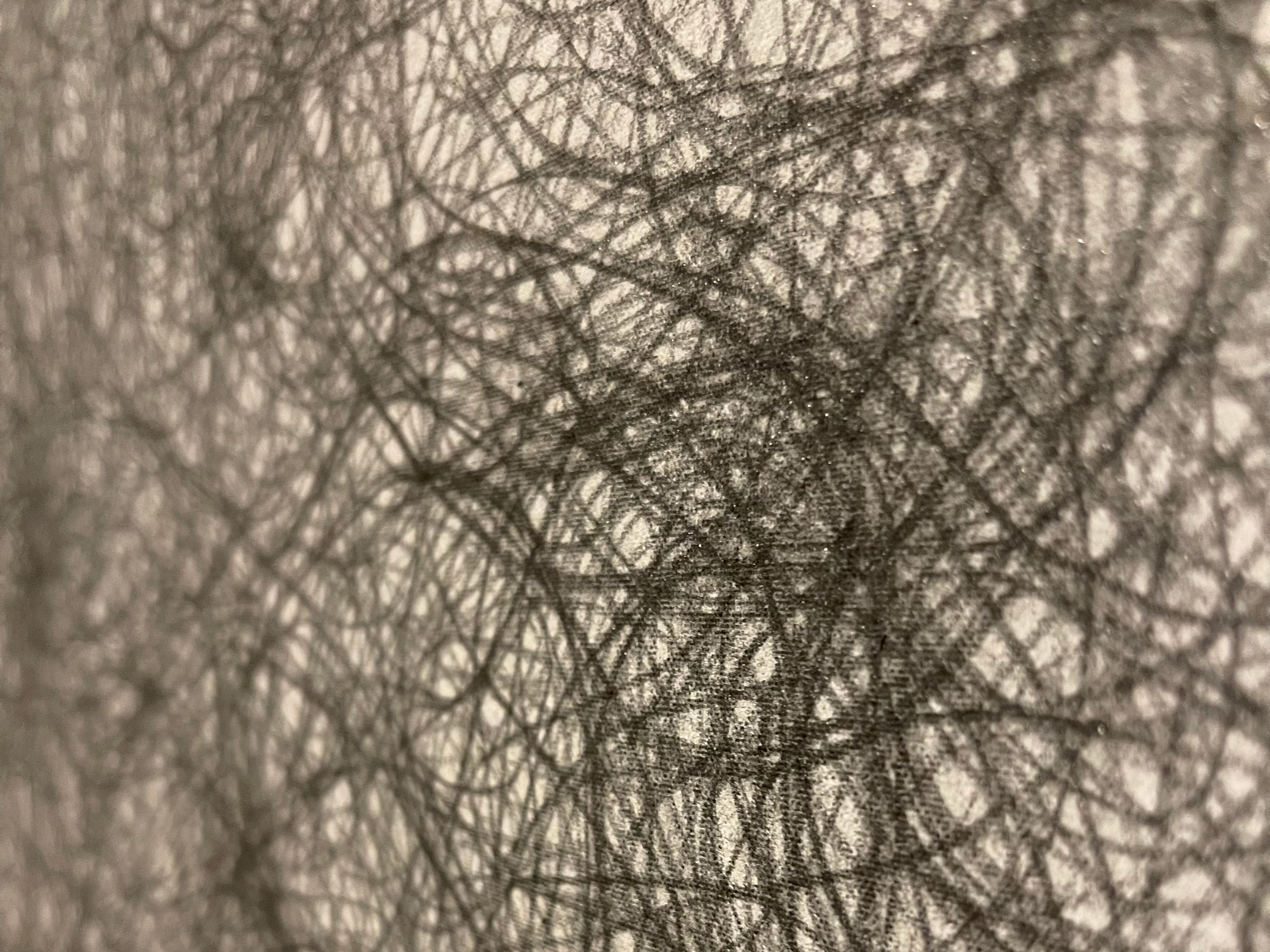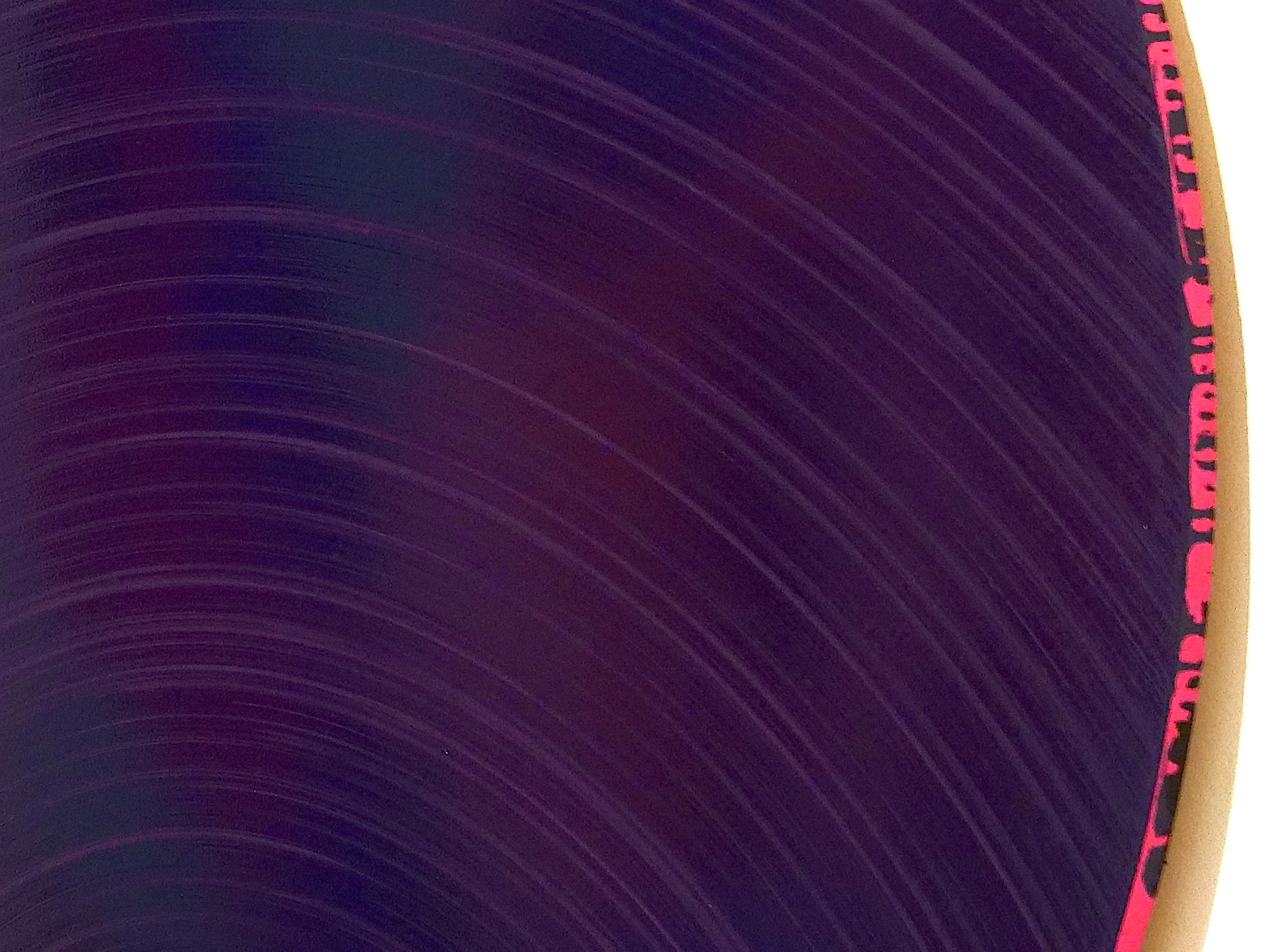The scored work lies at a boundary between drawing and sculpture. Each line is scored by hand directly into a metallic surface creating a kinetic movement of light that follows the curvature of the line. This dynamic phenomena is entirely relational to, and animated by, the changing proximity of the viewer.
Once the formal qualities of a line have been decided it is made up into a "profile" whereby the initial line will either be transcribed and cut by hand into a sheet material or, more recently, laser-cut into sheet steel. This "profile", is the tool by which Gooding is then able to make a repeat of the line by using it as a guide for the score.
He then methodically transcribes this line for as many times as is required in order to fill the picture plane. Often he will pivot the profile around certain predetermined points measured along the edge of the work so that the line sweeps out and rotates in strong geometric arch's. The result is a mercurial surface that is determined by the geometry of the line but is responsive to the movements of the viewer.
"2223", hand scored copper, 100 x 100cm, 2024
"1708", hand scored aluminium, 70x50cm, 2018
"1192", hand scored aluminium, 70x50cm, 2017
"1338", hand scored copper, 71x71cm, 2017
"1466", hand cored aluminium, 70x100cm, 2017
"1415", hand scored aluminium, 70x100cm, 2016
"1017", hand scored aluminium, 50x50cm, 2014.
"1338", hand scored copper, 50x65, 2014.
"947", hand scored aluminium, 50x50cm, 2014.
"1226", hand scored aluminium, 50x50cm, 2014.
"1262", hand scored copper, 50c50cm, 2014.
"1339", hand scored aluminium, 35x70cm, 2013.
